Adolescence, Sexuality, and the Theft of Innocence
The young women brought to life by Ai Yamaguchi in her paintings embrace various identities, both past and present, in a poetic manner.
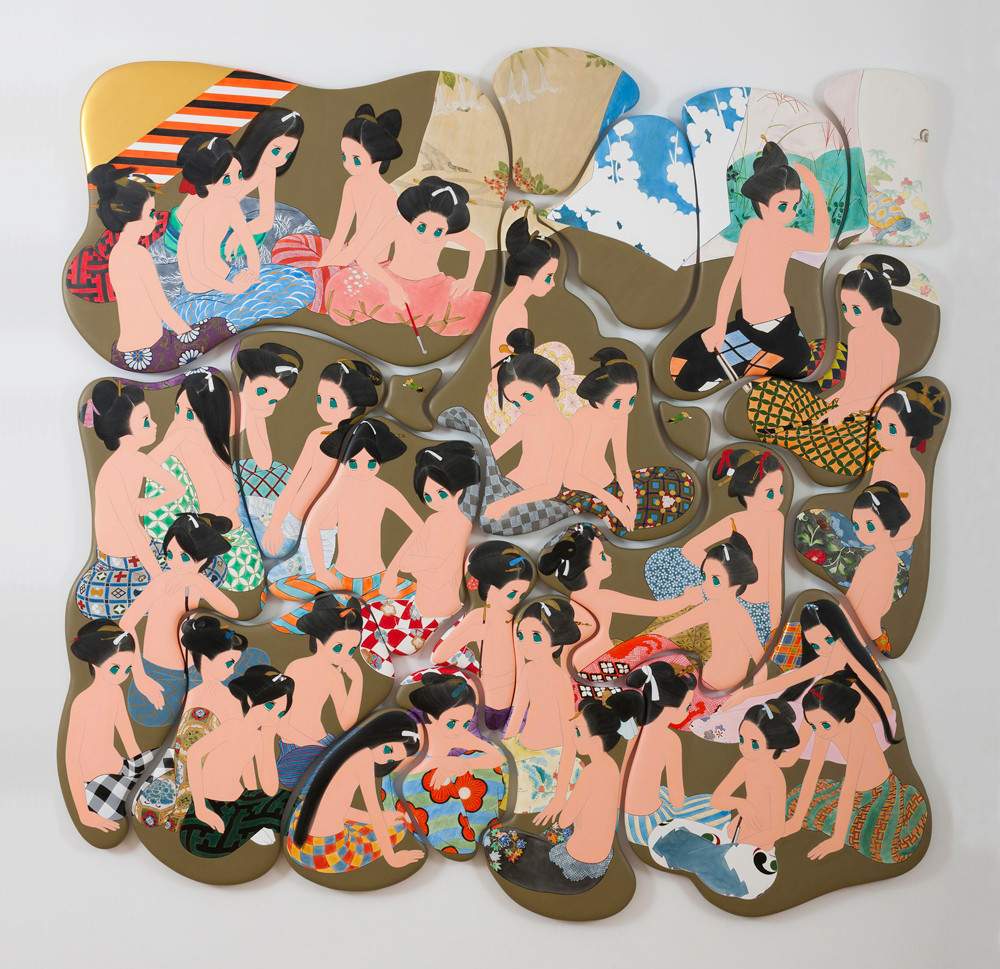
“Tsuki wa kakureta” (2011-2012)
Ai Yamaguchi has a gift for bringing together surfaces, contours, references, and periods. In her paintings, young sex workers characteristic of the Edo period come face to face with the worlds of manga and anime, Superflat, pop art, and kitsch kawaii culture. However, unlike Yoshitomo Nara and Takashi Murakami, the artist draws on such codes in order to address these young girls’ stolen innocence.
What lives are these?
Ai Yamaguchi goes beyond dimensions, formats, and planes, and ultimately frees herself from the question of perspectives with regard to substance and form. The two ‘schools’ brought together by the artist have an erotic dimension built into their DNA that Ai Yamaguchi examines in her own way. The universe inspired by tales of young courtesans, or sex workers, from the Edo period shines a spotlight on prepubescent adolescents, uniform and passive. Behind their long black hair, these young girls all display one expression, they share a feeling of sadness, a desire to escape their fate that they cannot control. They are also (overly) comfortable with their nudity, which does not seem to bother them.
‘In the Edo era, gender biases were pervasive. Interestingly, in the world of yukaku (that of the red-light districts), the women were considered socially dominant to men. I think this notion is intriguing and is reflected in my work’, the artist explained in Hi-Fructose Magazine on the occasion of an exhibition at the Joshua Liner Gallery.
The aesthetic and clean technique displayed in Ai Yamaguchi’s work, its different levels of appreciation and interpretation, allow the audience to question the evolution of society, the path that has been travelled towards (young) women’s liberation, and what remains to be done.
Ai Yamaguchi is represented by the Mizuma Art Gallery.

'Tokiwa' (2014)
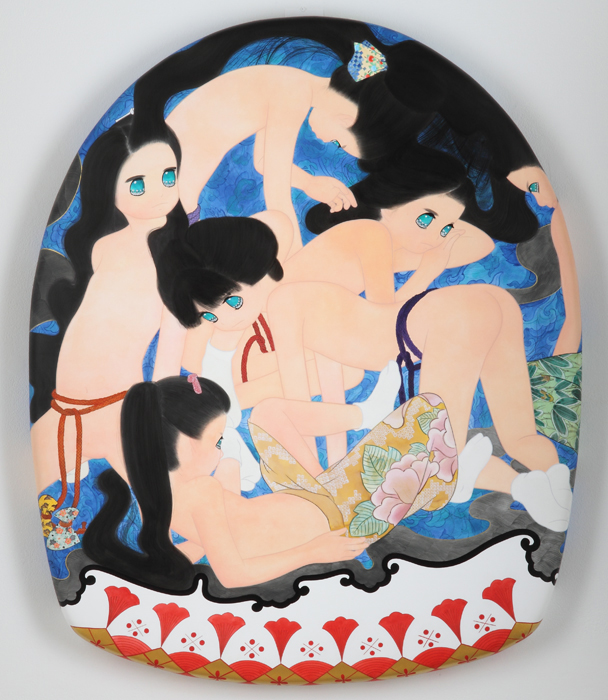
'Hebi wa tsururu' (2013)
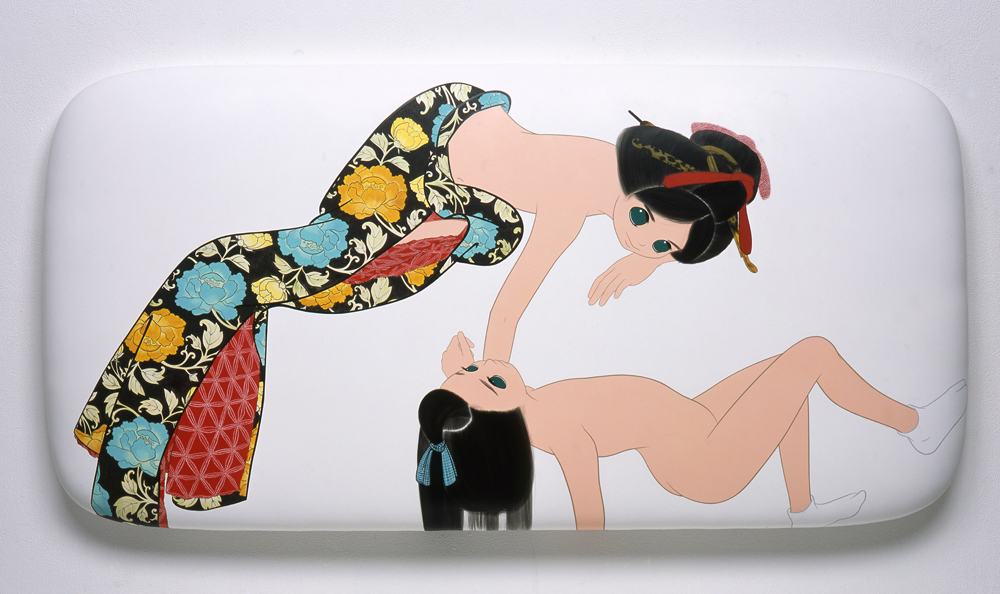
'Yoinomani' (2008)
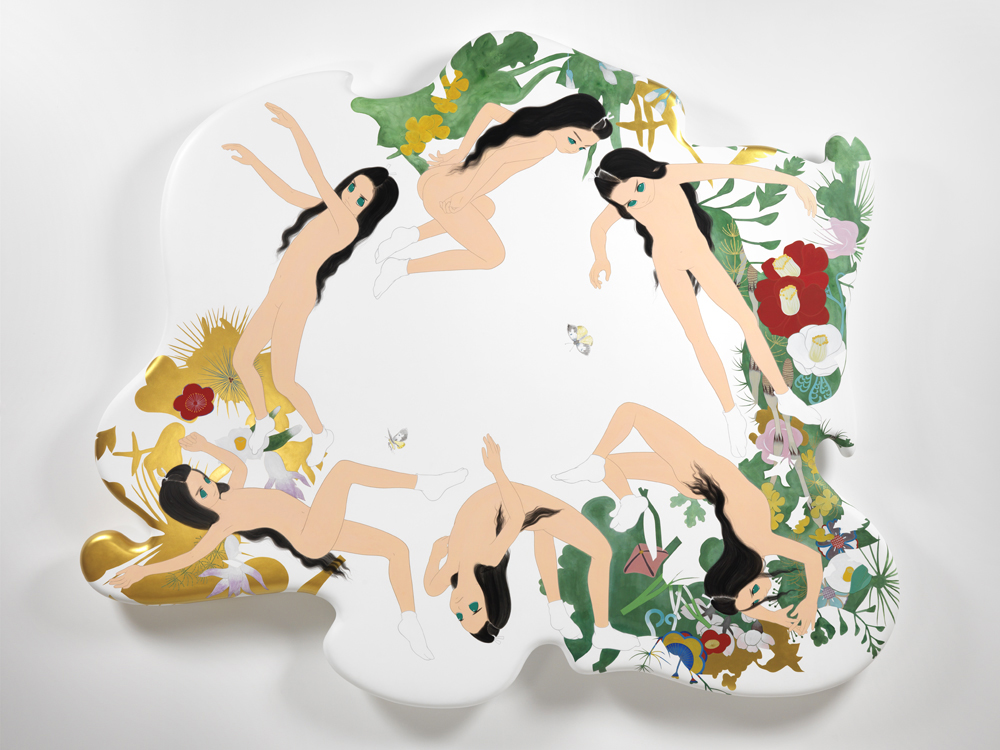
'Michi sugara' (2010)
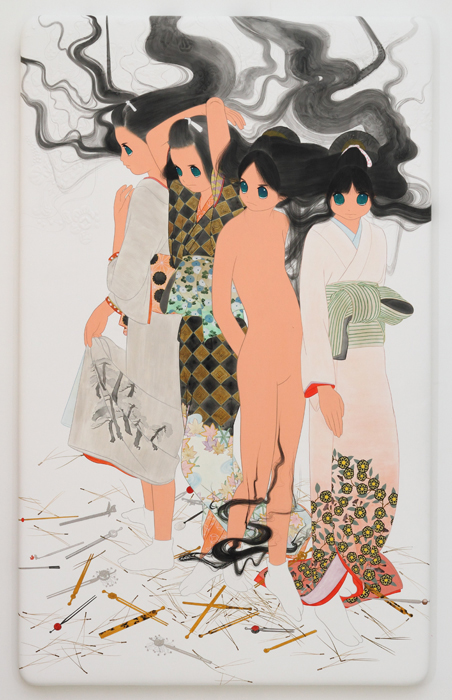
'Haru demo aki demo nai fuyu' (2014)
TRENDING
-
The Tattoos that Marked the Criminals of the Edo Period
Traditional tattoos were strong signifiers; murderers had head tattoos, while theft might result in an arm tattoo.

-
Chiharu Shiota, Red Threads of the Soul
Last year, more than 660,000 people visited the retrospective 'Chiharu Shiota: The Soul Trembles' exhibit at the Mori Art Museum.

-
‘Before Doubting Others, Doubt Yourself. Who Can Truly Say a Dish Isn’t What It Used to Be?’
In ‘A Non-Conformist’s Guide to Surviving Society’, author Satoshi Ogawa shares his strategies for navigating everyday life.

-
The Story of Sada Yacco, the Geisha who Bewitched Europe
Described by Dazed magazine as the first beauty influencer, she has been restored to her former glory since 2019.

-
Ito Jakuchu's Naturalist Paintings
From 15 September until 14 October 2018, the Petit Palais showcased the artist's iconic ‘Images of the Colourful Realm of Living Beings’.





